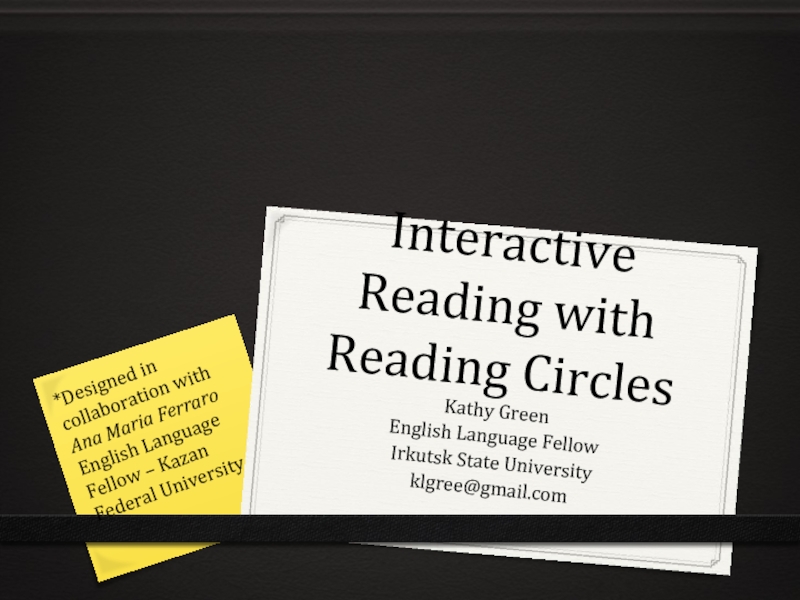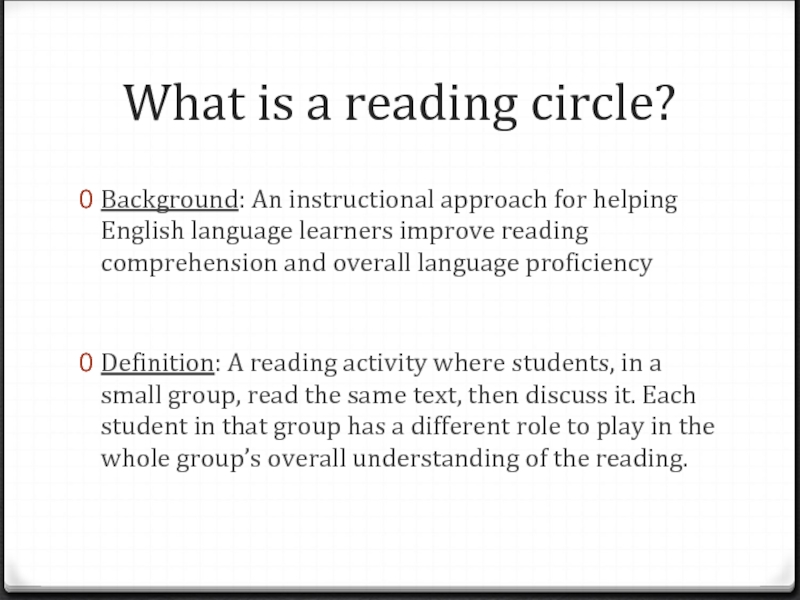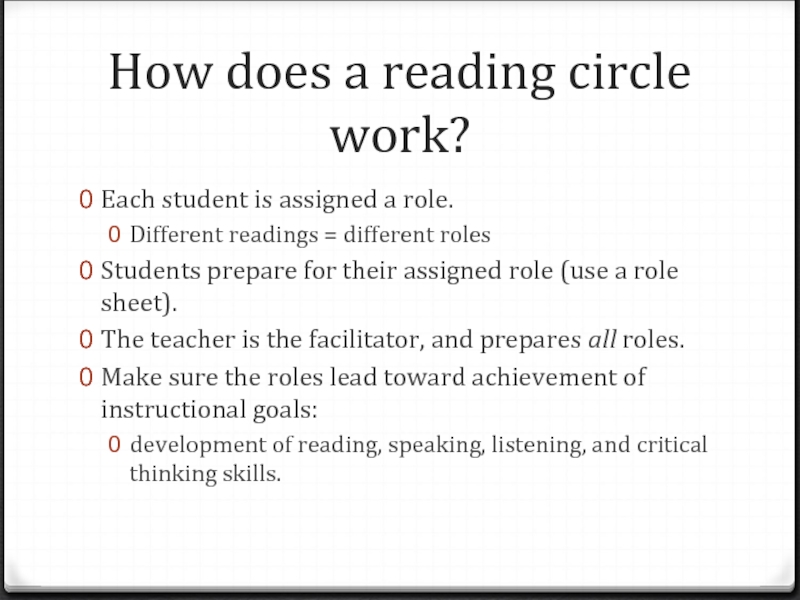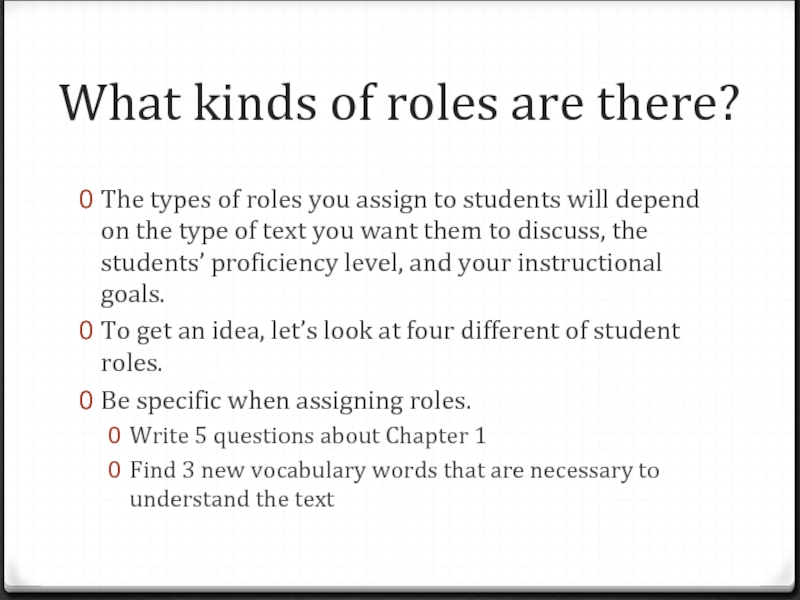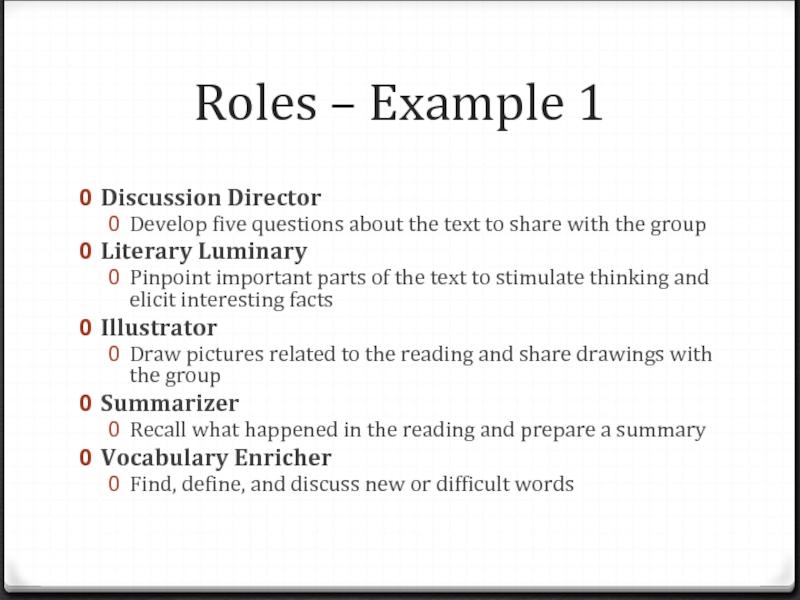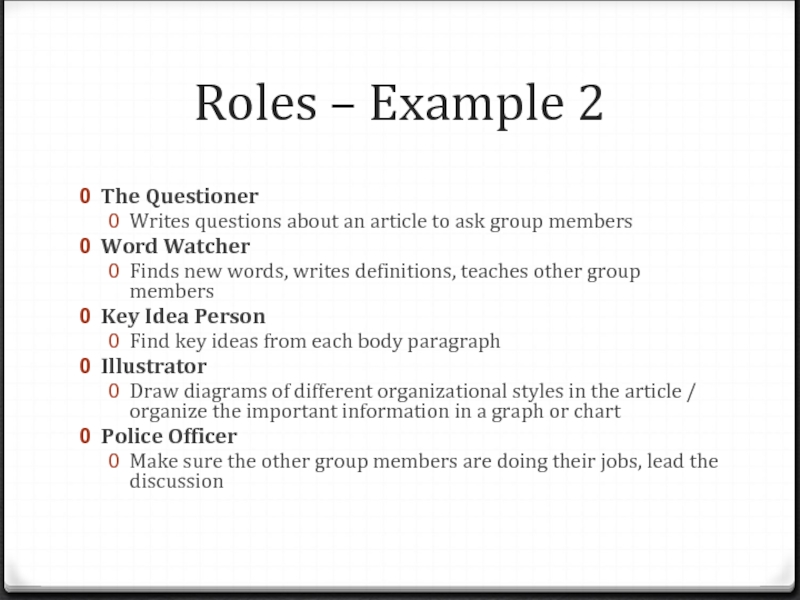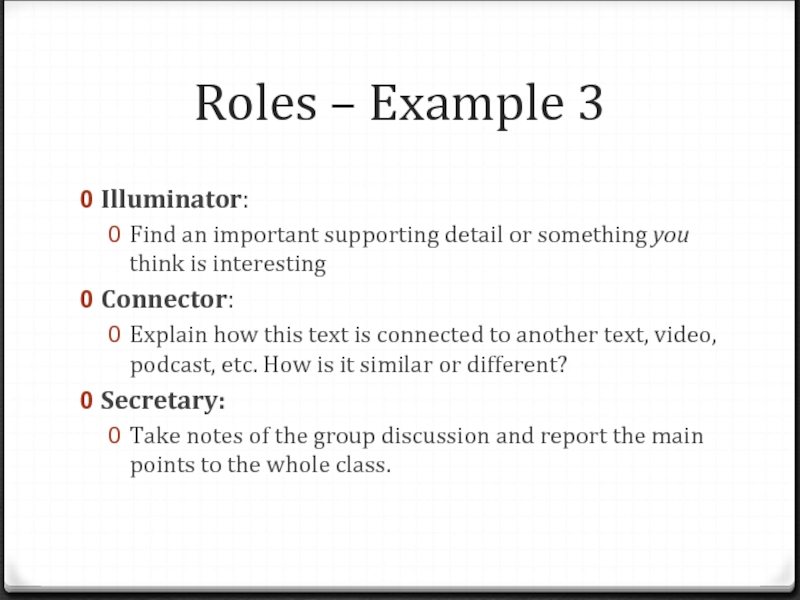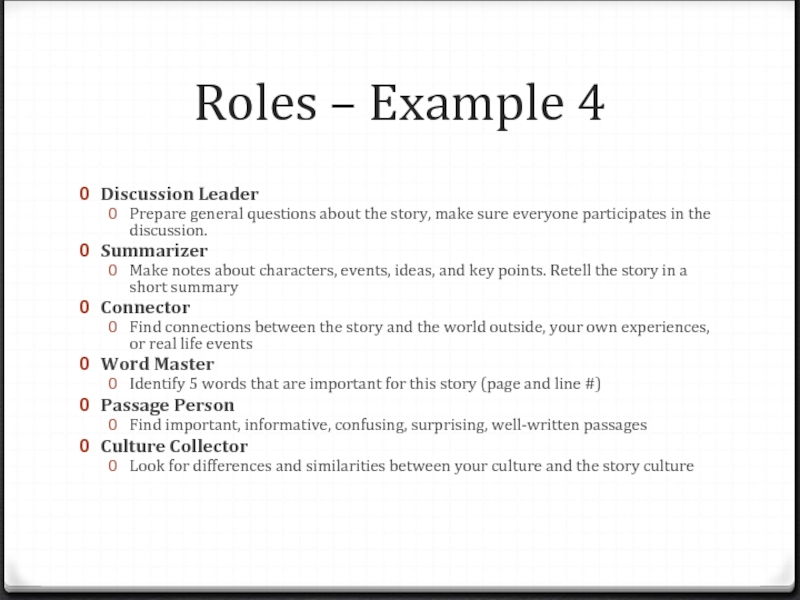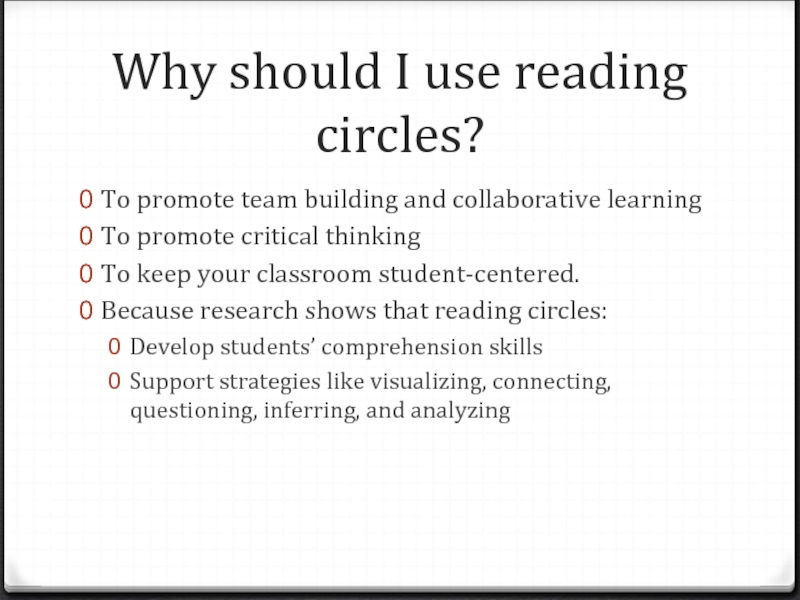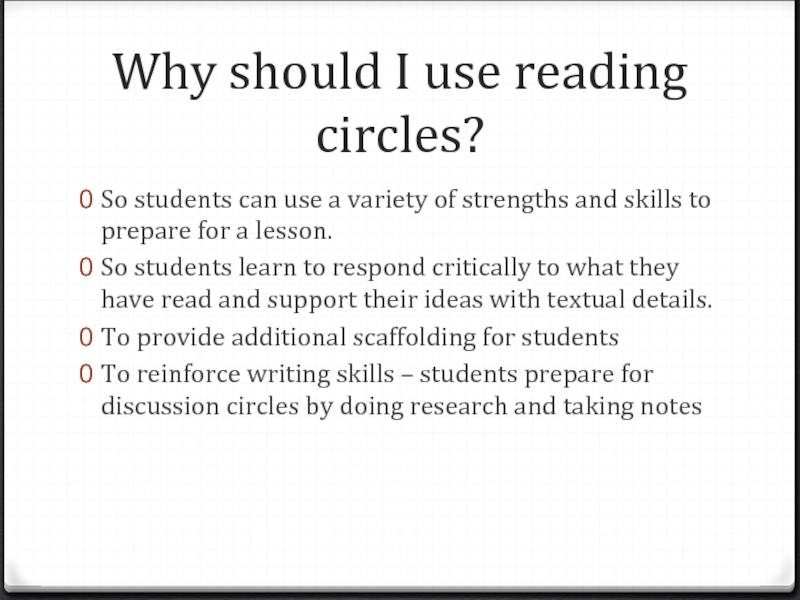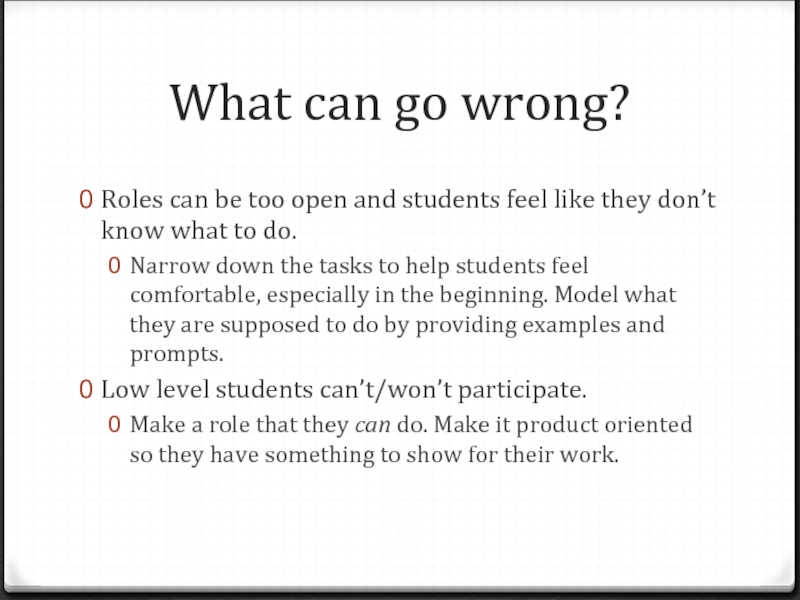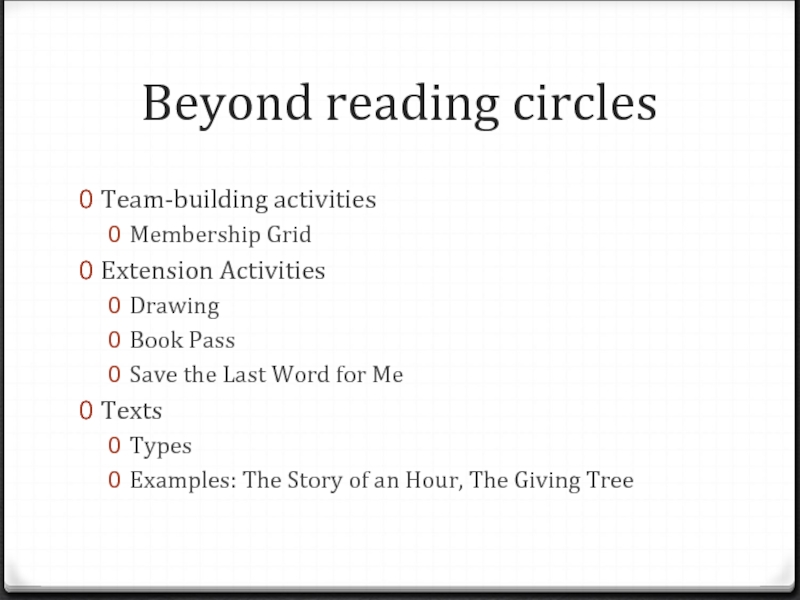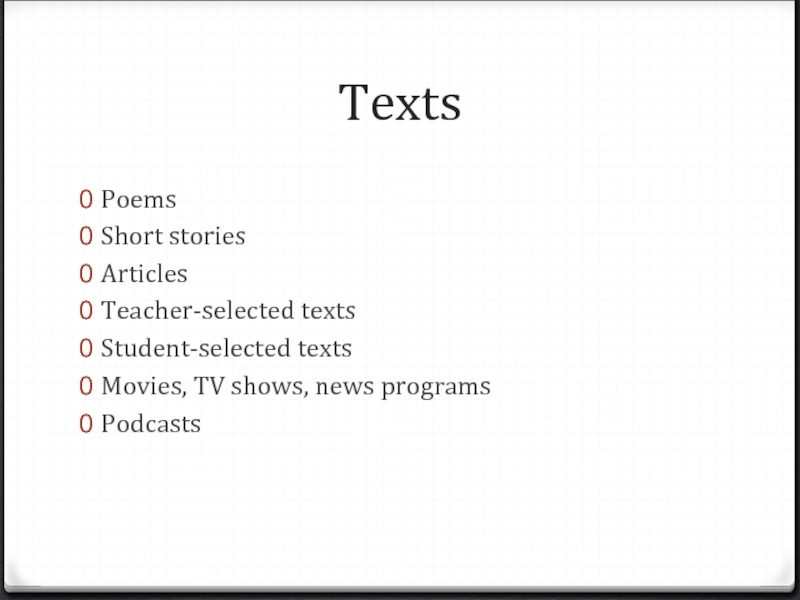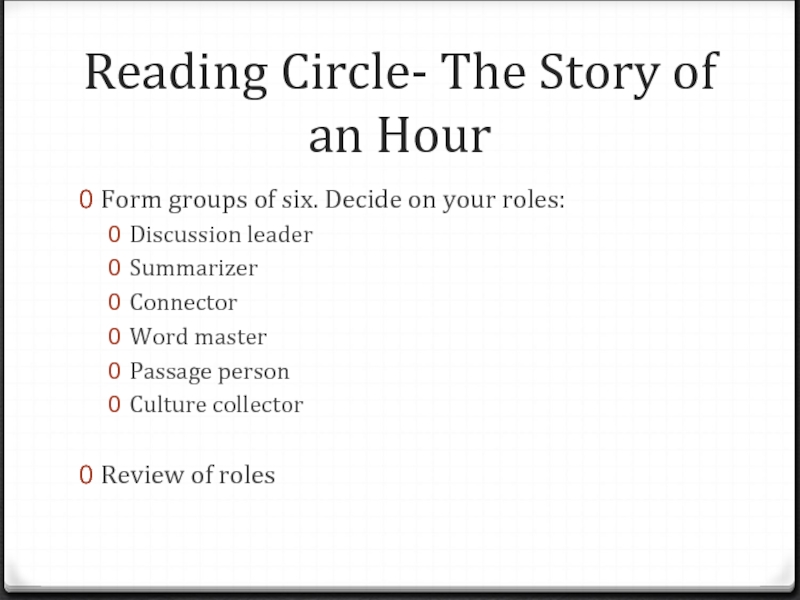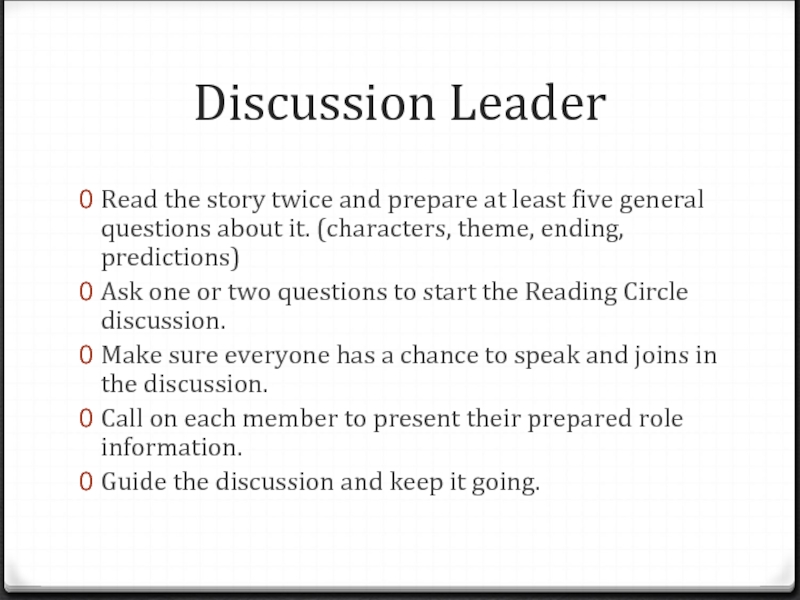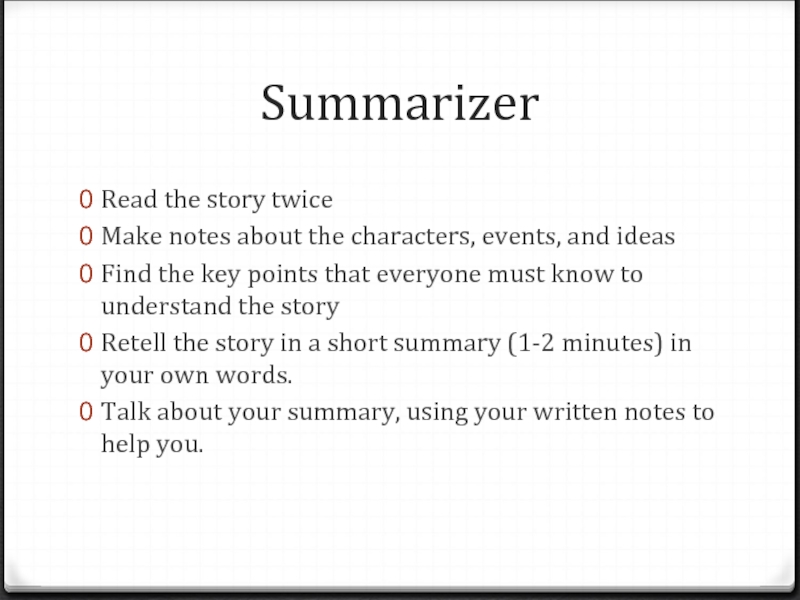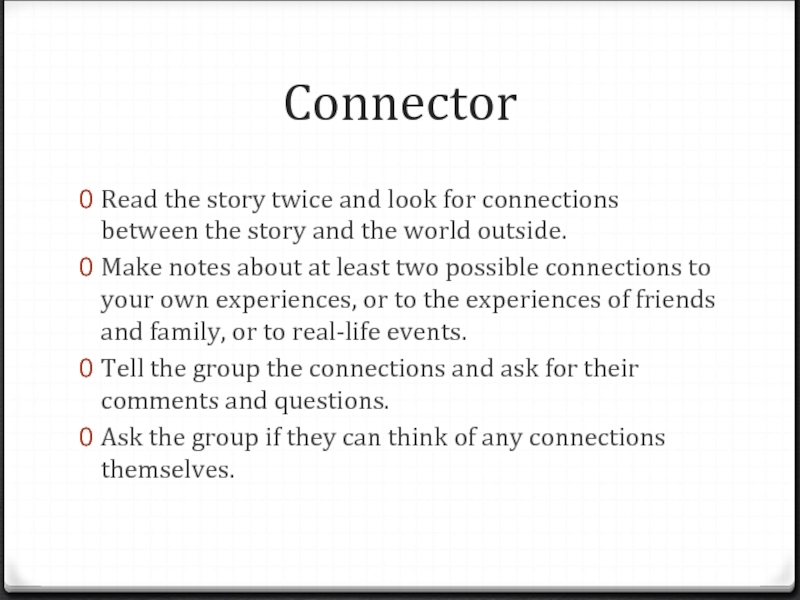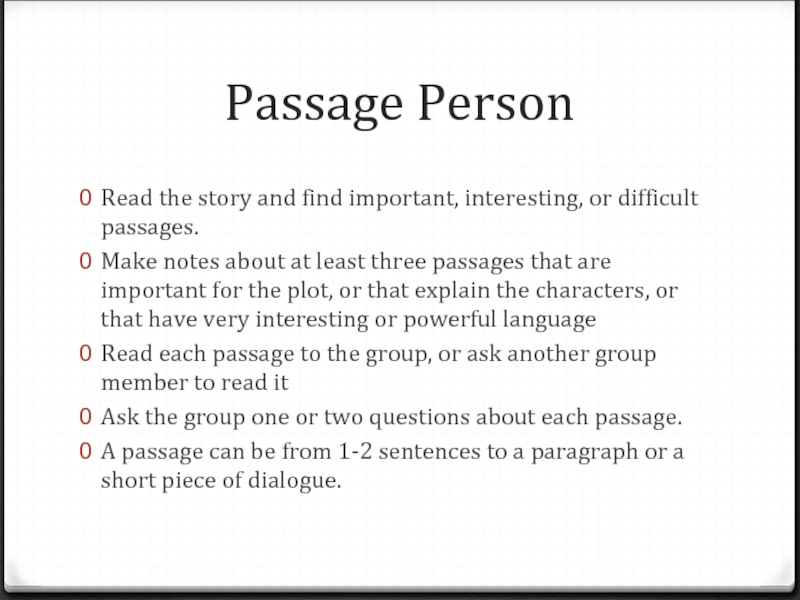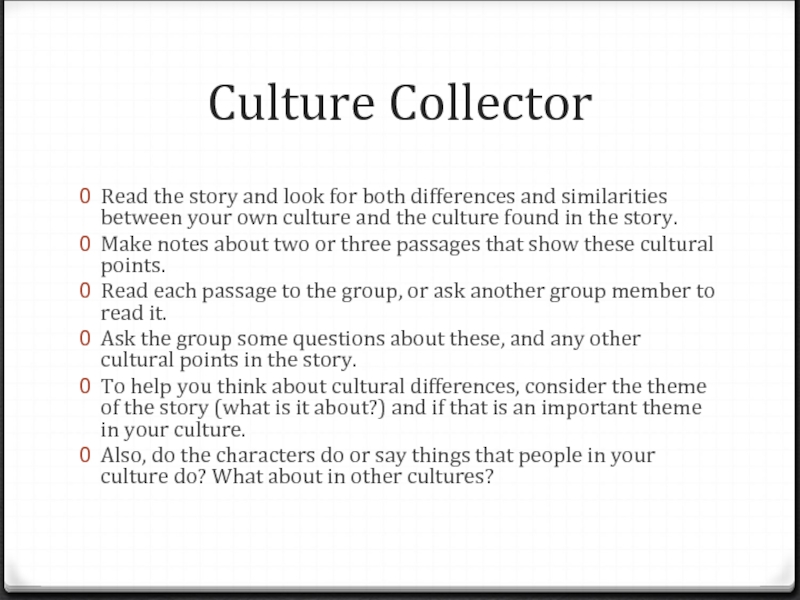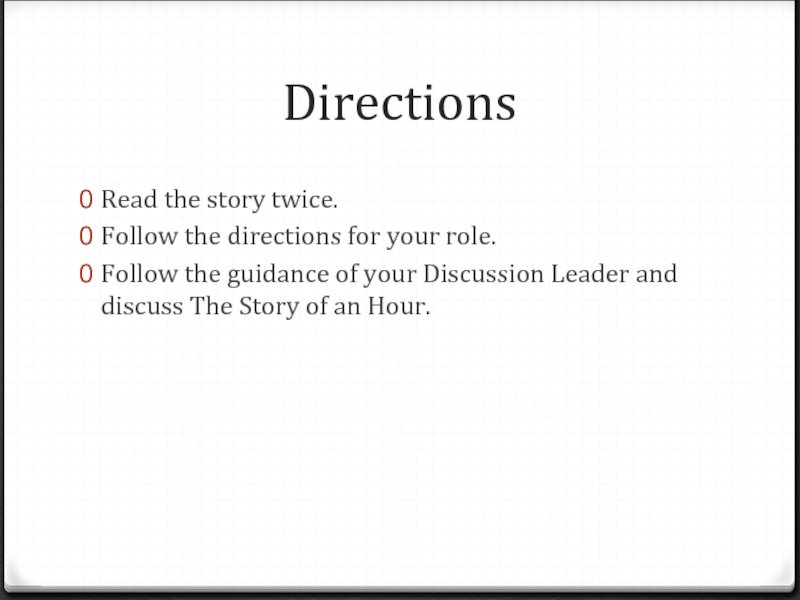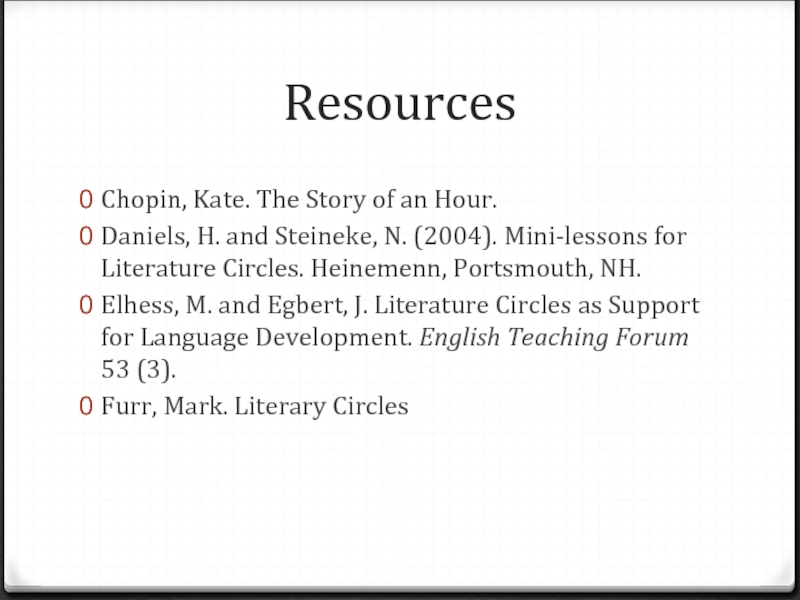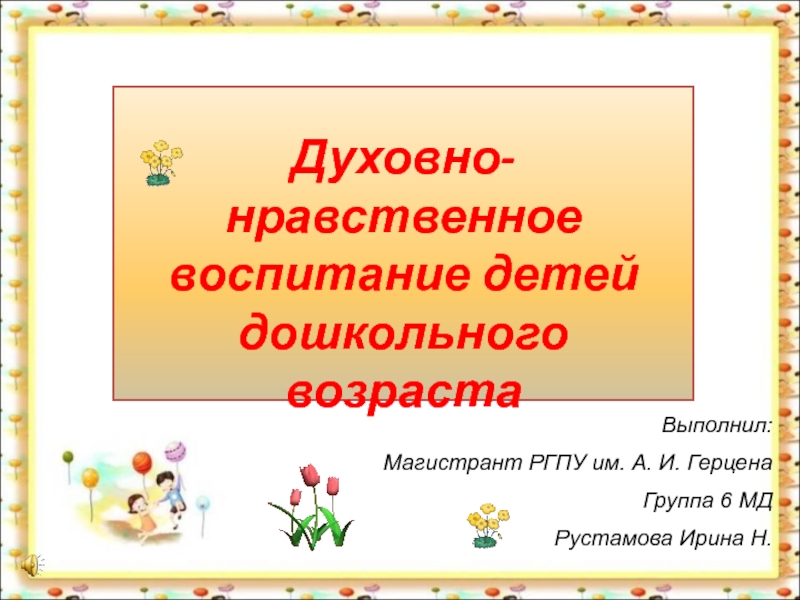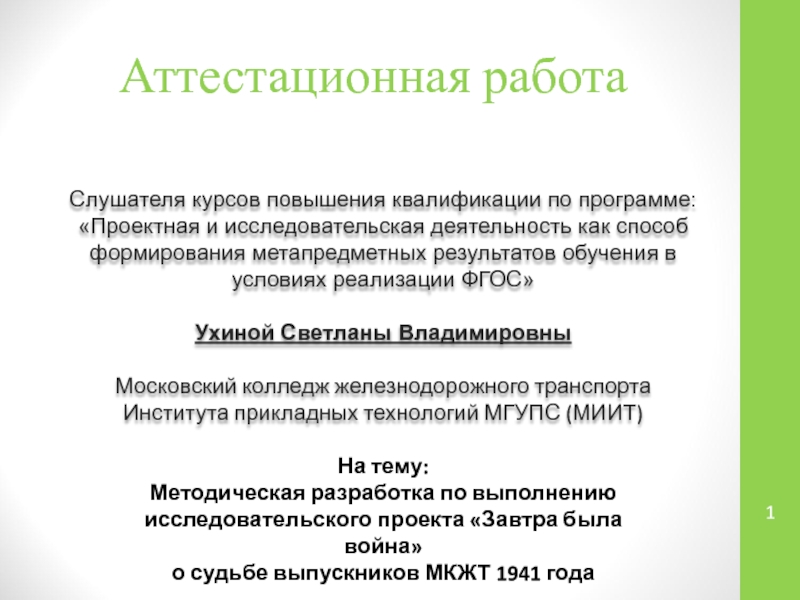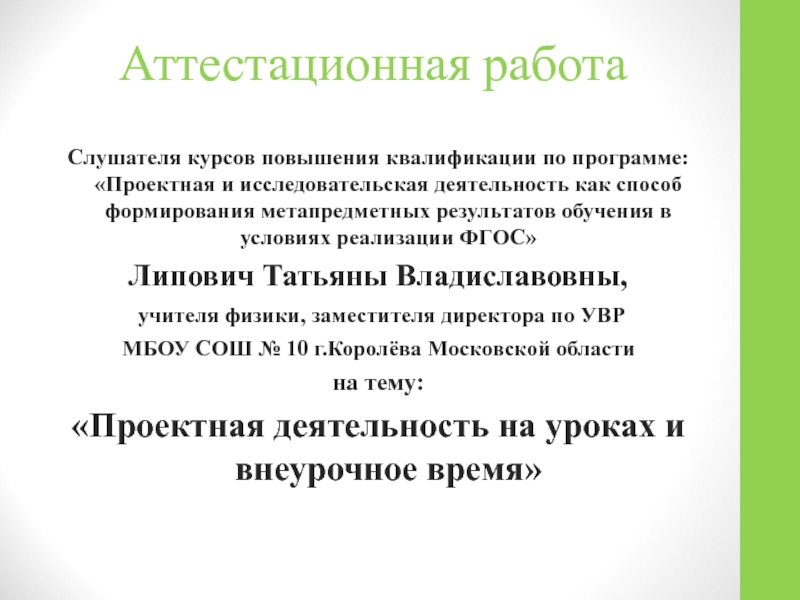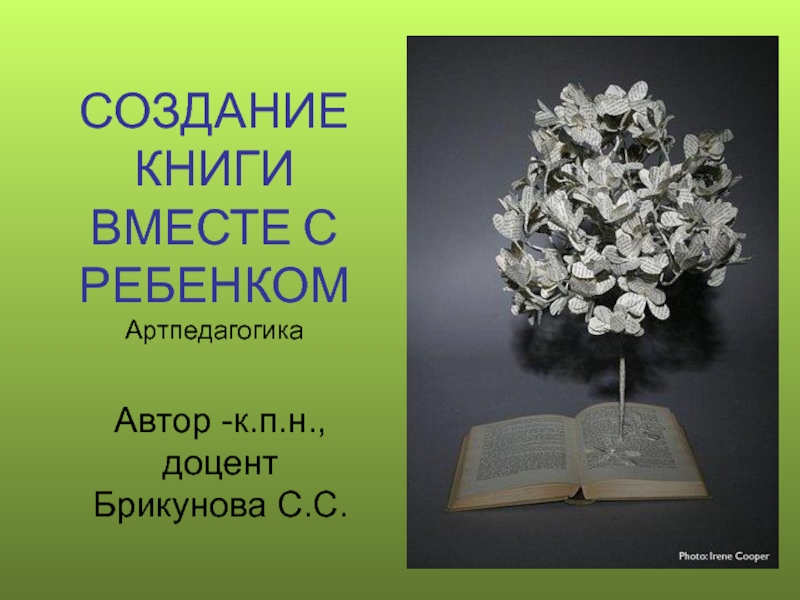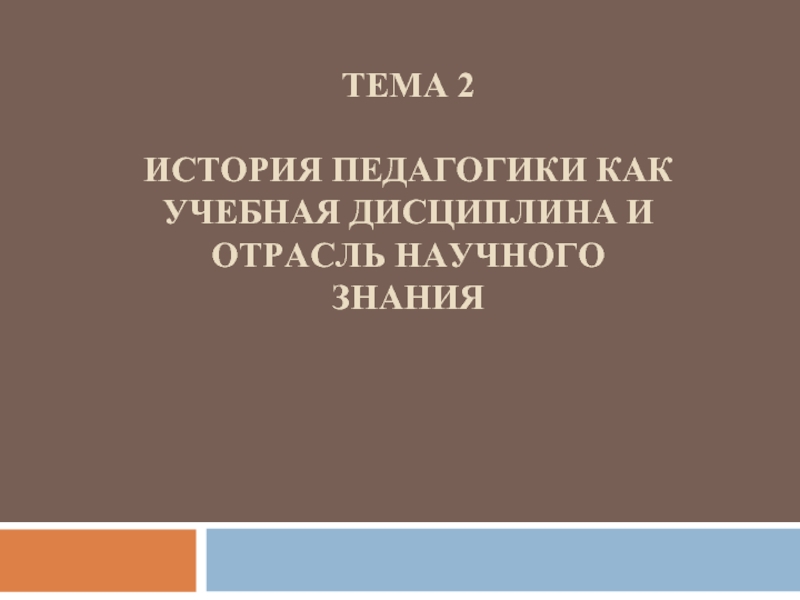collaboration with Ana Maria Ferraro
English Language Fellow – Kazan Federal University
- Главная
- Разное
- Дизайн
- Бизнес и предпринимательство
- Аналитика
- Образование
- Развлечения
- Красота и здоровье
- Финансы
- Государство
- Путешествия
- Спорт
- Недвижимость
- Армия
- Графика
- Культурология
- Еда и кулинария
- Лингвистика
- Английский язык
- Астрономия
- Алгебра
- Биология
- География
- Детские презентации
- Информатика
- История
- Литература
- Маркетинг
- Математика
- Медицина
- Менеджмент
- Музыка
- МХК
- Немецкий язык
- ОБЖ
- Обществознание
- Окружающий мир
- Педагогика
- Русский язык
- Технология
- Физика
- Философия
- Химия
- Шаблоны, картинки для презентаций
- Экология
- Экономика
- Юриспруденция
Interactive Reading with Reading Circles презентация
Содержание
- 1. Interactive Reading with Reading Circles
- 2. What is a reading circle? Background: An
- 3. How does a reading circle work?
- 4. What kinds of roles are there? The
- 5. Roles – Example 1 Discussion Director Develop
- 6. Roles – Example 2 The Questioner Writes
- 7. Roles – Example 3 Illuminator: Find an
- 8. Roles – Example 4 Discussion Leader Prepare
- 9. Why should I use reading circles? To
- 10. Why should I use reading circles? To
- 11. Why should I use reading circles? So
- 12. What can go wrong? Roles can
- 13. What can go wrong? Reading circle
- 14. Beyond reading circles Team-building activities Membership Grid
- 15. Texts Poems Short stories Articles Teacher-selected
- 16. Reading Circle- The Story of an Hour
- 17. Discussion Leader Read the story twice
- 18. Summarizer Read the story twice Make notes
- 19. Connector Read the story twice and look
- 20. Word Master Read the story, and look
- 21. Passage Person Read the story and find
- 22. Culture Collector Read the story and look
- 23. Directions Read the story twice. Follow the
- 24. Resources Chopin, Kate. The Story of an
Слайд 1Interactive Reading with Reading Circles
Kathy Green
English Language Fellow
Irkutsk State University
klgree@gmail.com
*Designed in
Слайд 2What is a reading circle?
Background: An instructional approach for helping English
language learners improve reading comprehension and overall language proficiency
Definition: A reading activity where students, in a small group, read the same text, then discuss it. Each student in that group has a different role to play in the whole group’s overall understanding of the reading.
Definition: A reading activity where students, in a small group, read the same text, then discuss it. Each student in that group has a different role to play in the whole group’s overall understanding of the reading.
Слайд 3How does a reading circle work?
Each student is assigned a
role.
Different readings = different roles
Students prepare for their assigned role (use a role sheet).
The teacher is the facilitator, and prepares all roles.
Make sure the roles lead toward achievement of instructional goals:
development of reading, speaking, listening, and critical thinking skills.
Different readings = different roles
Students prepare for their assigned role (use a role sheet).
The teacher is the facilitator, and prepares all roles.
Make sure the roles lead toward achievement of instructional goals:
development of reading, speaking, listening, and critical thinking skills.
Слайд 4What kinds of roles are there?
The types of roles you assign
to students will depend on the type of text you want them to discuss, the students’ proficiency level, and your instructional goals.
To get an idea, let’s look at four different of student roles.
Be specific when assigning roles.
Write 5 questions about Chapter 1
Find 3 new vocabulary words that are necessary to understand the text
To get an idea, let’s look at four different of student roles.
Be specific when assigning roles.
Write 5 questions about Chapter 1
Find 3 new vocabulary words that are necessary to understand the text
Слайд 5Roles – Example 1
Discussion Director
Develop five questions about the text to
share with the group
Literary Luminary
Pinpoint important parts of the text to stimulate thinking and elicit interesting facts
Illustrator
Draw pictures related to the reading and share drawings with the group
Summarizer
Recall what happened in the reading and prepare a summary
Vocabulary Enricher
Find, define, and discuss new or difficult words
Literary Luminary
Pinpoint important parts of the text to stimulate thinking and elicit interesting facts
Illustrator
Draw pictures related to the reading and share drawings with the group
Summarizer
Recall what happened in the reading and prepare a summary
Vocabulary Enricher
Find, define, and discuss new or difficult words
Слайд 6Roles – Example 2
The Questioner
Writes questions about an article to ask
group members
Word Watcher
Finds new words, writes definitions, teaches other group members
Key Idea Person
Find key ideas from each body paragraph
Illustrator
Draw diagrams of different organizational styles in the article / organize the important information in a graph or chart
Police Officer
Make sure the other group members are doing their jobs, lead the discussion
Word Watcher
Finds new words, writes definitions, teaches other group members
Key Idea Person
Find key ideas from each body paragraph
Illustrator
Draw diagrams of different organizational styles in the article / organize the important information in a graph or chart
Police Officer
Make sure the other group members are doing their jobs, lead the discussion
Слайд 7Roles – Example 3
Illuminator:
Find an important supporting detail or something you
think is interesting
Connector:
Explain how this text is connected to another text, video, podcast, etc. How is it similar or different?
Secretary:
Take notes of the group discussion and report the main points to the whole class.
Connector:
Explain how this text is connected to another text, video, podcast, etc. How is it similar or different?
Secretary:
Take notes of the group discussion and report the main points to the whole class.
Слайд 8Roles – Example 4
Discussion Leader
Prepare general questions about the story, make
sure everyone participates in the discussion.
Summarizer
Make notes about characters, events, ideas, and key points. Retell the story in a short summary
Connector
Find connections between the story and the world outside, your own experiences, or real life events
Word Master
Identify 5 words that are important for this story (page and line #)
Passage Person
Find important, informative, confusing, surprising, well-written passages
Culture Collector
Look for differences and similarities between your culture and the story culture
Summarizer
Make notes about characters, events, ideas, and key points. Retell the story in a short summary
Connector
Find connections between the story and the world outside, your own experiences, or real life events
Word Master
Identify 5 words that are important for this story (page and line #)
Passage Person
Find important, informative, confusing, surprising, well-written passages
Culture Collector
Look for differences and similarities between your culture and the story culture
Слайд 9Why should I use reading circles?
To promote team building and collaborative
learning
To promote critical thinking
To keep your classroom student-centered.
Because research shows that reading circles:
Develop students’ comprehension skills
Support strategies like visualizing, connecting, questioning, inferring, and analyzing
To promote critical thinking
To keep your classroom student-centered.
Because research shows that reading circles:
Develop students’ comprehension skills
Support strategies like visualizing, connecting, questioning, inferring, and analyzing
Слайд 10Why should I use reading circles?
To increase student participation in a
low-stress environment
To increase the sense of ownership and responsibility for students
To engage students in critical thinking and reflection
To provide opportunities for students to use the target language for real communication
To increase the sense of ownership and responsibility for students
To engage students in critical thinking and reflection
To provide opportunities for students to use the target language for real communication
Слайд 11Why should I use reading circles?
So students can use a variety
of strengths and skills to prepare for a lesson.
So students learn to respond critically to what they have read and support their ideas with textual details.
To provide additional scaffolding for students
To reinforce writing skills – students prepare for discussion circles by doing research and taking notes
So students learn to respond critically to what they have read and support their ideas with textual details.
To provide additional scaffolding for students
To reinforce writing skills – students prepare for discussion circles by doing research and taking notes
Слайд 12What can go wrong?
Roles can be too open and students
feel like they don’t know what to do.
Narrow down the tasks to help students feel comfortable, especially in the beginning. Model what they are supposed to do by providing examples and prompts.
Low level students can’t/won’t participate.
Make a role that they can do. Make it product oriented so they have something to show for their work.
Narrow down the tasks to help students feel comfortable, especially in the beginning. Model what they are supposed to do by providing examples and prompts.
Low level students can’t/won’t participate.
Make a role that they can do. Make it product oriented so they have something to show for their work.
Слайд 13What can go wrong?
Reading circle embers come to class unprepared.
Find a way for them to participate anyway.
Have them take notes, look for information in the text, ask questions, summarize the group discussion in writing
Have the rest of the group decide what should happen with students who come unprepared.
Last resort? If everyone’s getting lazy, randomly collect everyone’s notes and grade them to make sure everyone starts participating again.
Слайд 14Beyond reading circles
Team-building activities
Membership Grid
Extension Activities
Drawing
Book Pass
Save the Last Word for
Me
Texts
Types
Examples: The Story of an Hour, The Giving Tree
Texts
Types
Examples: The Story of an Hour, The Giving Tree
Слайд 15Texts
Poems
Short stories
Articles
Teacher-selected texts
Student-selected texts
Movies, TV shows, news programs
Podcasts
Слайд 16Reading Circle- The Story of an Hour
Form groups of six. Decide
on your roles:
Discussion leader
Summarizer
Connector
Word master
Passage person
Culture collector
Review of roles
Discussion leader
Summarizer
Connector
Word master
Passage person
Culture collector
Review of roles
Слайд 17Discussion Leader
Read the story twice and prepare at least five
general questions about it. (characters, theme, ending, predictions)
Ask one or two questions to start the Reading Circle discussion.
Make sure everyone has a chance to speak and joins in the discussion.
Call on each member to present their prepared role information.
Guide the discussion and keep it going.
Ask one or two questions to start the Reading Circle discussion.
Make sure everyone has a chance to speak and joins in the discussion.
Call on each member to present their prepared role information.
Guide the discussion and keep it going.
Слайд 18Summarizer
Read the story twice
Make notes about the characters, events, and ideas
Find
the key points that everyone must know to understand the story
Retell the story in a short summary (1-2 minutes) in your own words.
Talk about your summary, using your written notes to help you.
Retell the story in a short summary (1-2 minutes) in your own words.
Talk about your summary, using your written notes to help you.
Слайд 19Connector
Read the story twice and look for connections between the story
and the world outside.
Make notes about at least two possible connections to your own experiences, or to the experiences of friends and family, or to real-life events.
Tell the group the connections and ask for their comments and questions.
Ask the group if they can think of any connections themselves.
Make notes about at least two possible connections to your own experiences, or to the experiences of friends and family, or to real-life events.
Tell the group the connections and ask for their comments and questions.
Ask the group if they can think of any connections themselves.
Слайд 20Word Master
Read the story, and look for words or short phrases
that are new or difficult to understand, or that are important in the story.
Choose five words (only five) that you think are important for this story.
Explain the meanings of these five words in simple English to the group.
Tell the group why these words are important for understanding the story.
The words you choose might be repeated often, used in an unusual way, or be important to the meaning of the story.
Choose five words (only five) that you think are important for this story.
Explain the meanings of these five words in simple English to the group.
Tell the group why these words are important for understanding the story.
The words you choose might be repeated often, used in an unusual way, or be important to the meaning of the story.
Слайд 21Passage Person
Read the story and find important, interesting, or difficult passages.
Make notes about at least three passages that are important for the plot, or that explain the characters, or that have very interesting or powerful language
Read each passage to the group, or ask another group member to read it
Ask the group one or two questions about each passage.
A passage can be from 1-2 sentences to a paragraph or a short piece of dialogue.
Слайд 22Culture Collector
Read the story and look for both differences and similarities
between your own culture and the culture found in the story.
Make notes about two or three passages that show these cultural points.
Read each passage to the group, or ask another group member to read it.
Ask the group some questions about these, and any other cultural points in the story.
To help you think about cultural differences, consider the theme of the story (what is it about?) and if that is an important theme in your culture.
Also, do the characters do or say things that people in your culture do? What about in other cultures?
Make notes about two or three passages that show these cultural points.
Read each passage to the group, or ask another group member to read it.
Ask the group some questions about these, and any other cultural points in the story.
To help you think about cultural differences, consider the theme of the story (what is it about?) and if that is an important theme in your culture.
Also, do the characters do or say things that people in your culture do? What about in other cultures?
Слайд 23Directions
Read the story twice.
Follow the directions for your role.
Follow the guidance
of your Discussion Leader and discuss The Story of an Hour.
Слайд 24Resources
Chopin, Kate. The Story of an Hour.
Daniels, H. and Steineke,
N. (2004). Mini-lessons for Literature Circles. Heinemenn, Portsmouth, NH.
Elhess, M. and Egbert, J. Literature Circles as Support for Language Development. English Teaching Forum 53 (3).
Furr, Mark. Literary Circles
Elhess, M. and Egbert, J. Literature Circles as Support for Language Development. English Teaching Forum 53 (3).
Furr, Mark. Literary Circles
